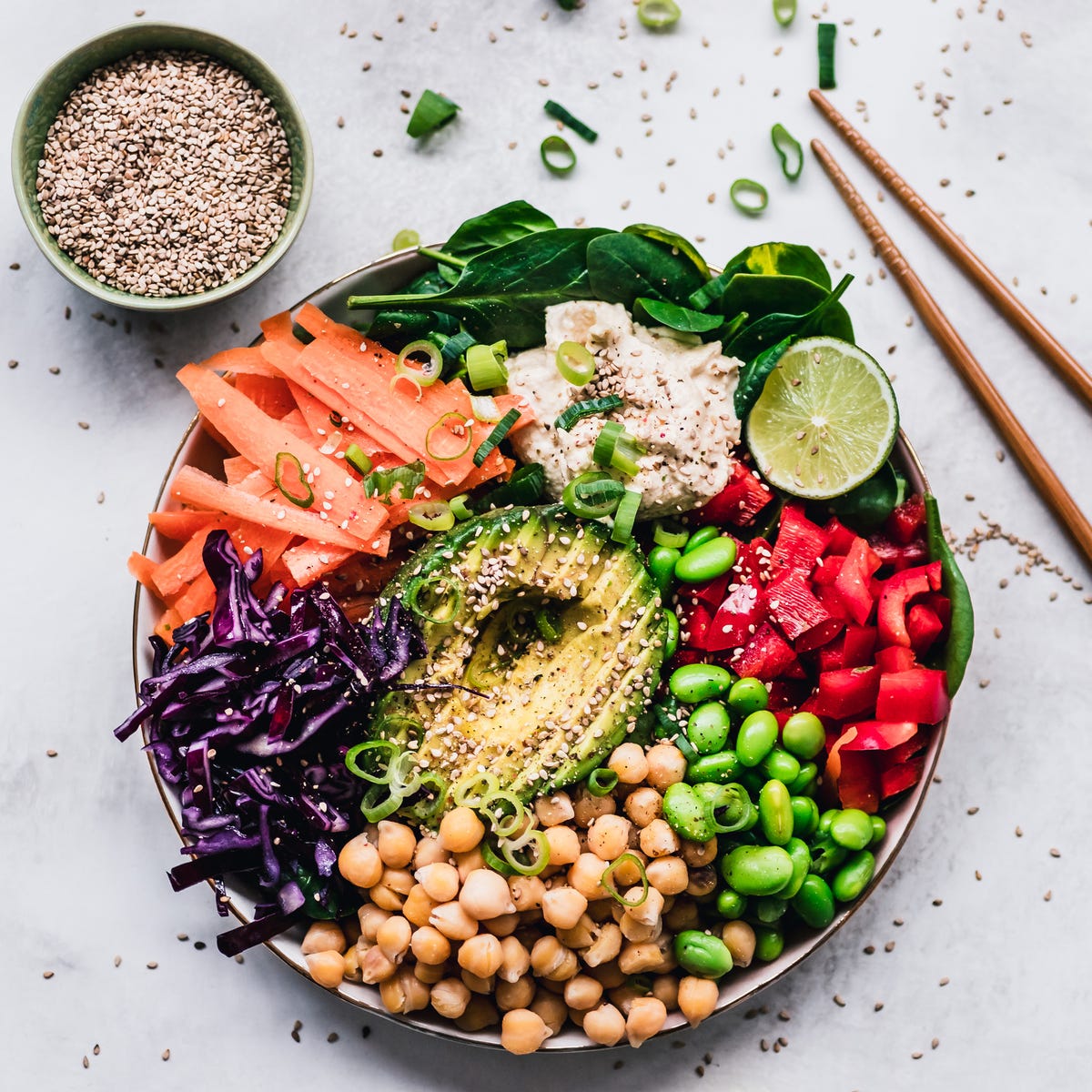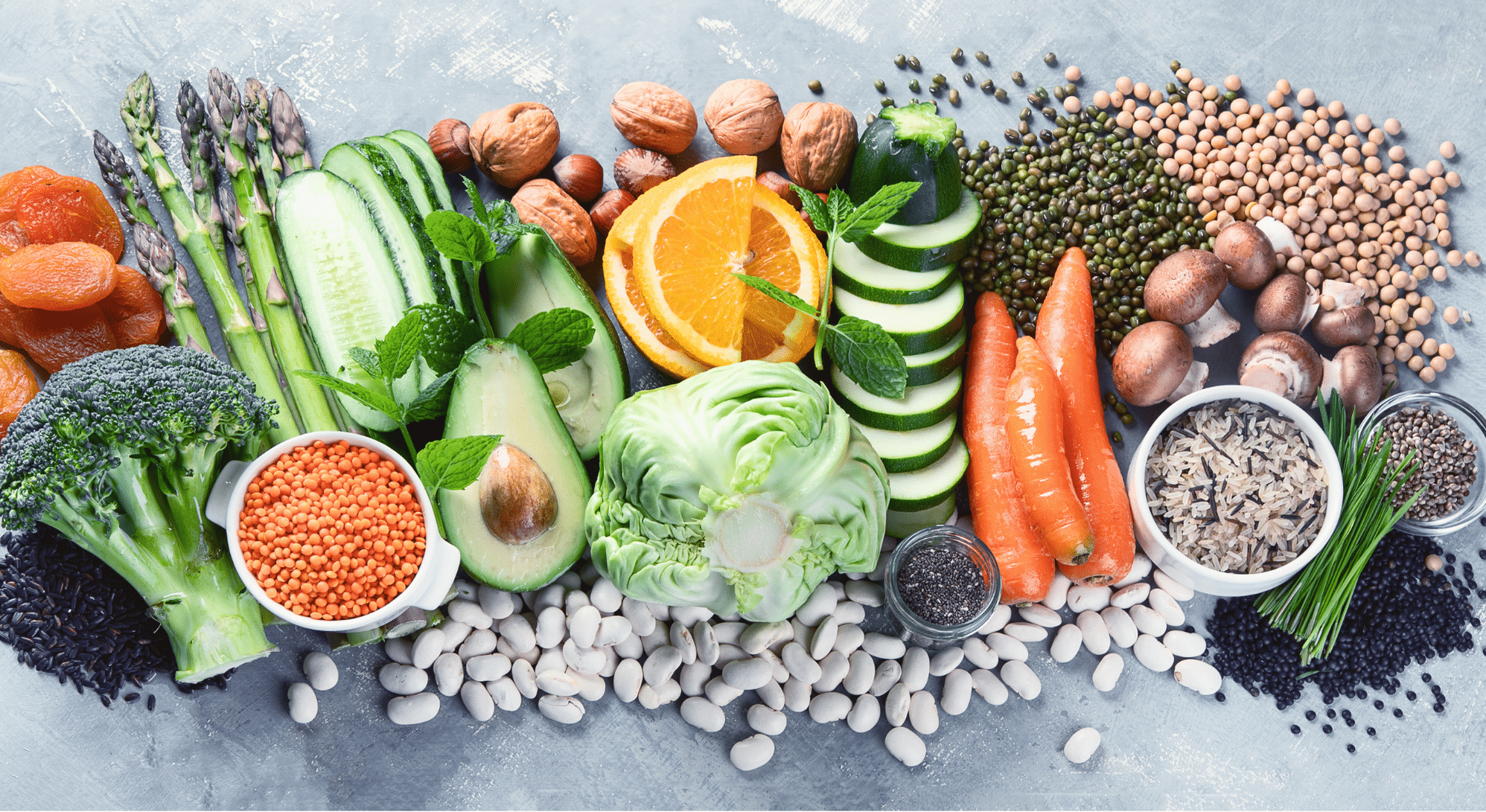What are the different types of vegetarian diets – Embark on a culinary adventure as we delve into the diverse world of vegetarian diets, uncovering the principles, benefits, and considerations associated with each type. From lacto-vegetarianism to veganism, this comprehensive guide unravels the intricacies of plant-based eating, empowering you to make informed choices that align with your health goals and ethical beliefs.
Vegetarian diets have gained immense popularity due to their potential health benefits, ethical considerations, and environmental concerns. Understanding the different types of vegetarian diets is crucial for making an informed decision that suits your individual needs and preferences. This guide will provide you with a thorough understanding of each diet, enabling you to navigate the world of plant-based eating with confidence.
Lacto-vegetarian Diet
The lacto-vegetarian diet is a type of vegetarian diet that includes dairy products, such as milk, cheese, and yogurt. Lacto-vegetarians do not eat meat, fish, poultry, or eggs.
Lacto-vegetarian diets are typically high in protein, calcium, and vitamin D. They are also a good source of fiber, potassium, and antioxidants. Some studies have shown that lacto-vegetarian diets may be associated with a reduced risk of heart disease, stroke, and some types of cancer.
Benefits of the Lacto-vegetarian Diet
- High in protein, calcium, and vitamin D.
- Good source of fiber, potassium, and antioxidants.
- May be associated with a reduced risk of heart disease, stroke, and some types of cancer.
Limitations of the Lacto-vegetarian Diet
- May be difficult to get enough iron and vitamin B12.
- Some people may experience digestive problems from consuming dairy products.
Ovo-vegetarian Diet
The ovo-vegetarian diet is a type of vegetarian diet that includes eggs but excludes dairy products, meat, poultry, fish, and seafood. Ovo-vegetarians believe that eggs are a nutritious and ethical food source, as they do not require the death of an animal.
Allowed foods:Fruits, vegetables, legumes, nuts, seeds, grains, eggs, and egg products.
Restricted foods:Meat, poultry, fish, seafood, dairy products, and honey.
Find out further about the benefits of vitamins for pescatarians that can provide significant benefits.
Nutritional Implications and Health Considerations, What are the different types of vegetarian diets
The ovo-vegetarian diet can provide all the essential nutrients for good health. However, it is important to ensure that you are getting enough protein, vitamin B12, iron, and calcium. Good sources of protein for ovo-vegetarians include eggs, legumes, nuts, and seeds.
Vitamin B12 is found only in animal products, so ovo-vegetarians need to make sure they are getting enough from fortified foods or supplements. Iron is found in many plant foods, but it is not as easily absorbed as iron from animal products.
Good sources of iron for ovo-vegetarians include beans, lentils, spinach, and fortified cereals. Calcium is found in many plant foods, but it is not as well absorbed as calcium from dairy products. Good sources of calcium for ovo-vegetarians include fortified plant milks, leafy green vegetables, and tofu.
Lacto-ovo Vegetarian Diet
The lacto-ovo vegetarian diet combines dairy products and eggs with plant-based foods. It is a popular choice for those who want to reduce their meat consumption without completely eliminating animal products.
The following are permitted foods in a lacto-ovo vegetarian diet:
- Fruits
- Vegetables
- Whole grains
- Legumes
- Nuts
- Seeds
- Dairy products
- Eggs
The following are prohibited foods in a lacto-ovo vegetarian diet:
- Meat
- Poultry
- Fish
- Seafood
There are several advantages to adopting a lacto-ovo vegetarian diet. For example, this diet can help to reduce the risk of heart disease, stroke, and certain types of cancer. It can also be a good way to lose weight and improve overall health.
However, there are also some disadvantages to consider. For example, a lacto-ovo vegetarian diet may not provide enough protein or iron. It is important to talk to a doctor or registered dietitian before making any changes to your diet.
Browse the multiple elements of nutritional requirements for vegetarians to gain a more broad understanding.
Vegan Diet: What Are The Different Types Of Vegetarian Diets
The vegan diet is a plant-based approach that excludes all animal products, including meat, poultry, fish, eggs, dairy, and honey. Vegans choose this lifestyle for various reasons, including ethical concerns about animal welfare, environmental sustainability, and health benefits.
Food Groups Included and Excluded in a Vegan Diet
Included:
- Fruits
- Vegetables
- Whole grains
- Legumes
- Nuts
- Seeds
- Plant-based oils
Excluded:
Examine how pesco fish can boost performance in your area.
- Meat
- Poultry
- Fish
- Eggs
- Dairy
- Honey
Potential Health Benefits and Challenges of the Vegan Lifestyle
Benefits:
Do not overlook explore the latest data about fish eater name.
- Reduced risk of heart disease
- Lowered cholesterol levels
- Improved blood sugar control
- Reduced risk of certain types of cancer
- Weight management
Challenges:
- Ensuring adequate intake of essential nutrients, such as vitamin B12, iron, and calcium
- Social and cultural barriers, as vegan options may not always be readily available
- Potential for nutrient deficiencies if the diet is not well-planned
Flexitarian Diet
The flexitarian diet is a primarily vegetarian approach that occasionally incorporates meat consumption. It offers flexibility and allows for variations, catering to individuals who want to reduce their meat intake without fully committing to a vegetarian lifestyle.
Transitioning to and Maintaining a Flexitarian Lifestyle
- Start Gradually:Begin by incorporating meatless meals a few days a week, gradually increasing the frequency as you become more comfortable.
- Focus on Plant-Based Foods:Make vegetables, fruits, whole grains, and legumes the foundation of your meals, ensuring adequate protein and nutrient intake.
- Choose Lean Meat Options:When consuming meat, opt for leaner cuts, such as chicken breast, fish, or turkey, and limit processed meats.
- Pay Attention to Nutrient Intake:Monitor your intake of essential nutrients, such as protein, iron, and vitamin B12, and supplement if necessary.
- Listen to Your Body:Pay attention to how your body responds to different foods and adjust your diet accordingly.
Closure
As we conclude our exploration of vegetarian diets, it is evident that the choice of diet is a deeply personal one, influenced by individual health goals, ethical beliefs, and lifestyle preferences. Whether you opt for a lacto-vegetarian, ovo-vegetarian, lacto-ovo vegetarian, vegan, or flexitarian approach, embracing a plant-based diet can offer numerous benefits while promoting a healthier and more sustainable lifestyle.
Remember, the key to a successful vegetarian journey lies in planning, variety, and balance. By incorporating a wide range of nutrient-rich plant foods into your diet, you can ensure that you are meeting your nutritional needs and enjoying a satisfying and flavorful culinary experience.
Expert Answers
What are the key differences between vegetarian diets?
Vegetarian diets vary primarily in the types of animal products they include or exclude. Lacto-vegetarians consume dairy products, ovo-vegetarians eat eggs, lacto-ovo vegetarians include both dairy and eggs, vegans exclude all animal products, and flexitarians primarily follow a vegetarian diet but occasionally consume meat.
Is a vegetarian diet healthy?
Well-planned vegetarian diets can be nutritionally adequate and provide numerous health benefits, including a reduced risk of chronic diseases such as heart disease, stroke, type 2 diabetes, and certain types of cancer.
How do I transition to a vegetarian diet?
Start by gradually reducing your meat consumption and incorporating more plant-based foods into your meals. Focus on consuming a variety of fruits, vegetables, whole grains, legumes, and nuts to ensure you are meeting your nutritional needs.


